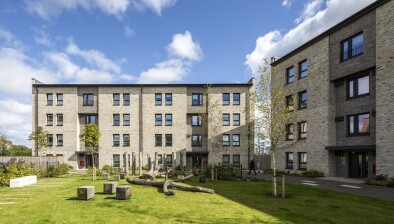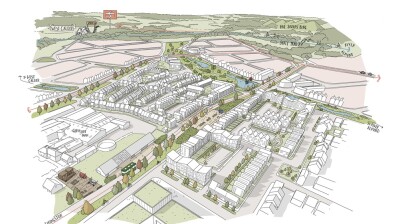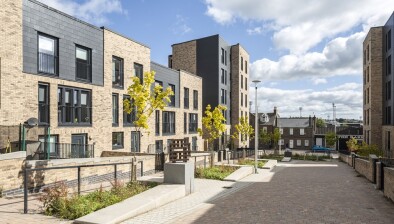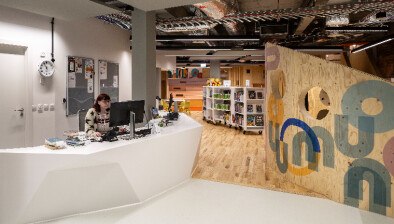Architects’ Showcase: Scotland’s first passive warehouse is a micro power station for energy, ideas and enterprise
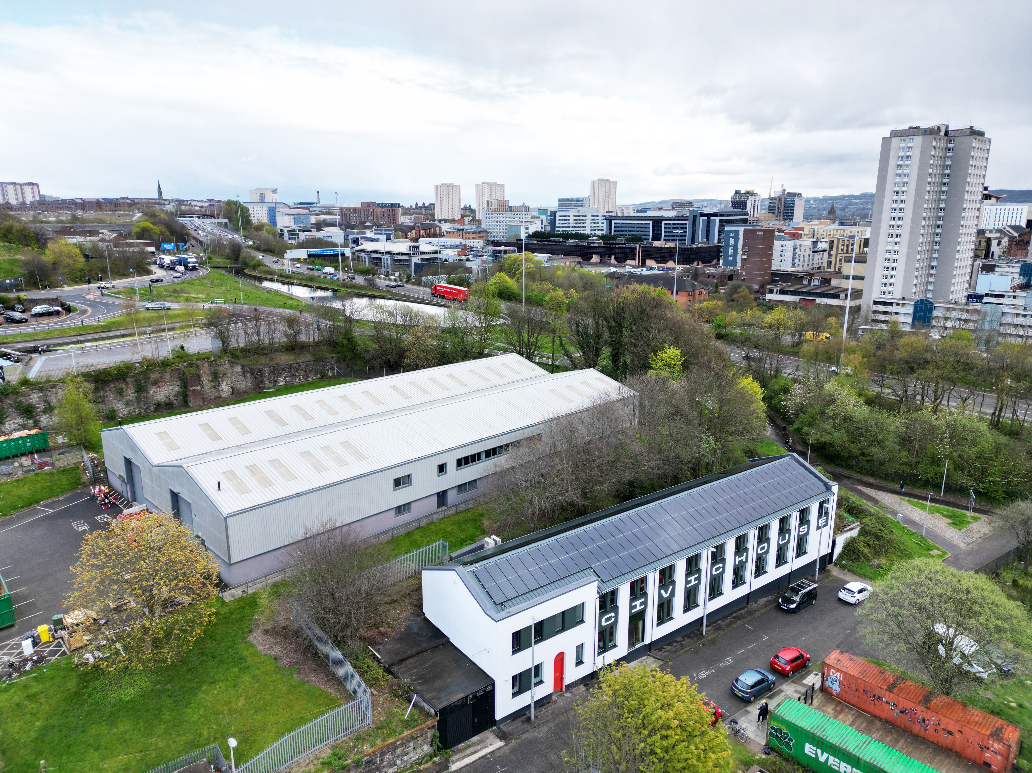
The retrofit of Civic House, a former printworks, has created a hub of cultural and social enterprise that brings new life to a neglected corner of Glasgow.
The repurposed building is also a small-scale power plant ‒ generating three times as much electricity as it consumes over the course of a year. The project is an exemplar for the creative reuse of post-industrial cities’ former factories and warehouses, which are often left to fall derelict despite their architectural value and cultural heritage. These buildings that once supported industrial growth – and an explosion in carbon emissions – can now support new green industries and a low-carbon future.
Built in the 1920s, Civic House is located just north of Glasgow city centre in a quarter now known as Speirs Locks. This was once part of a thriving industrial district that grew up around the Port Dundas terminus of the Forth and Clyde canal. But following the building of the M8 motorway in the 1960s, the already declining area became a post-industrial island – cut off from its inner-city context by the canal to the east, the M8 to the south and a busy road to the west.
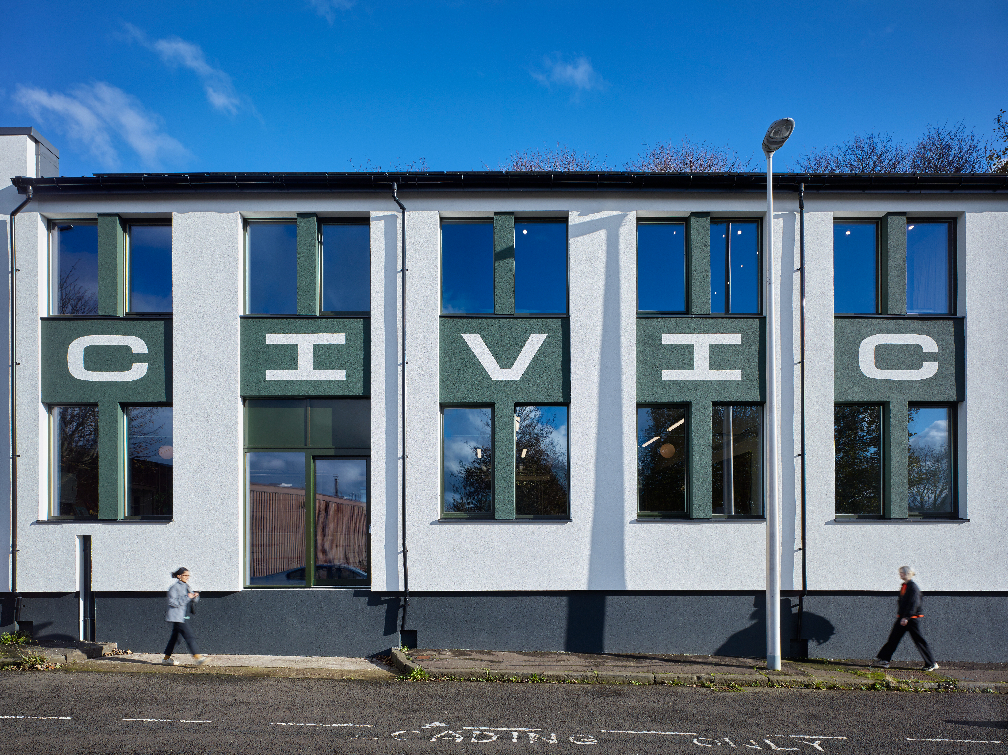
Image: Andrew Lee
A 2006 masterplan for the wholesale commercial redevelopment of Speirs Locks was unrealised after the 2008 financial crash. Since then, the district has had a partial renaissance as a cultural quarter, but Speirs Locks still feels disconnected from the city centre. Many of its former industrial buildings are neglected and dilapidated, despite their versatile human scale and easily walkable location.
The Civic House retrofit is part of a wider project by community interest company Agile City to bring new life to the area by creating spaces for cultural, social and green enterprises and events. After acquiring the 840m2 building in 2017 with money from the Scottish Government’s Regeneration Capital Grant fund, Agile City took time to get to know the space and to observe how people used it during events such as Architecture Fringe and the Glasgow Short Film Festival. This allowed them to identify an achievable sequence of works and sources of funding for a low-carbon retrofit.
In 2018, Agile City initiated the refurbishment of the interior while commissioning Collective Architecture to conduct a feasibility study for an energy-efficient external retrofit. The feasibility study energy modelling – using the Passive House Planning Package – indicated that the building’s heating demand could be reduced by 86% (from 450kWh/m2/a to 60kWh/m2/a) while maintaining a temperature of 20oC throughout the year.
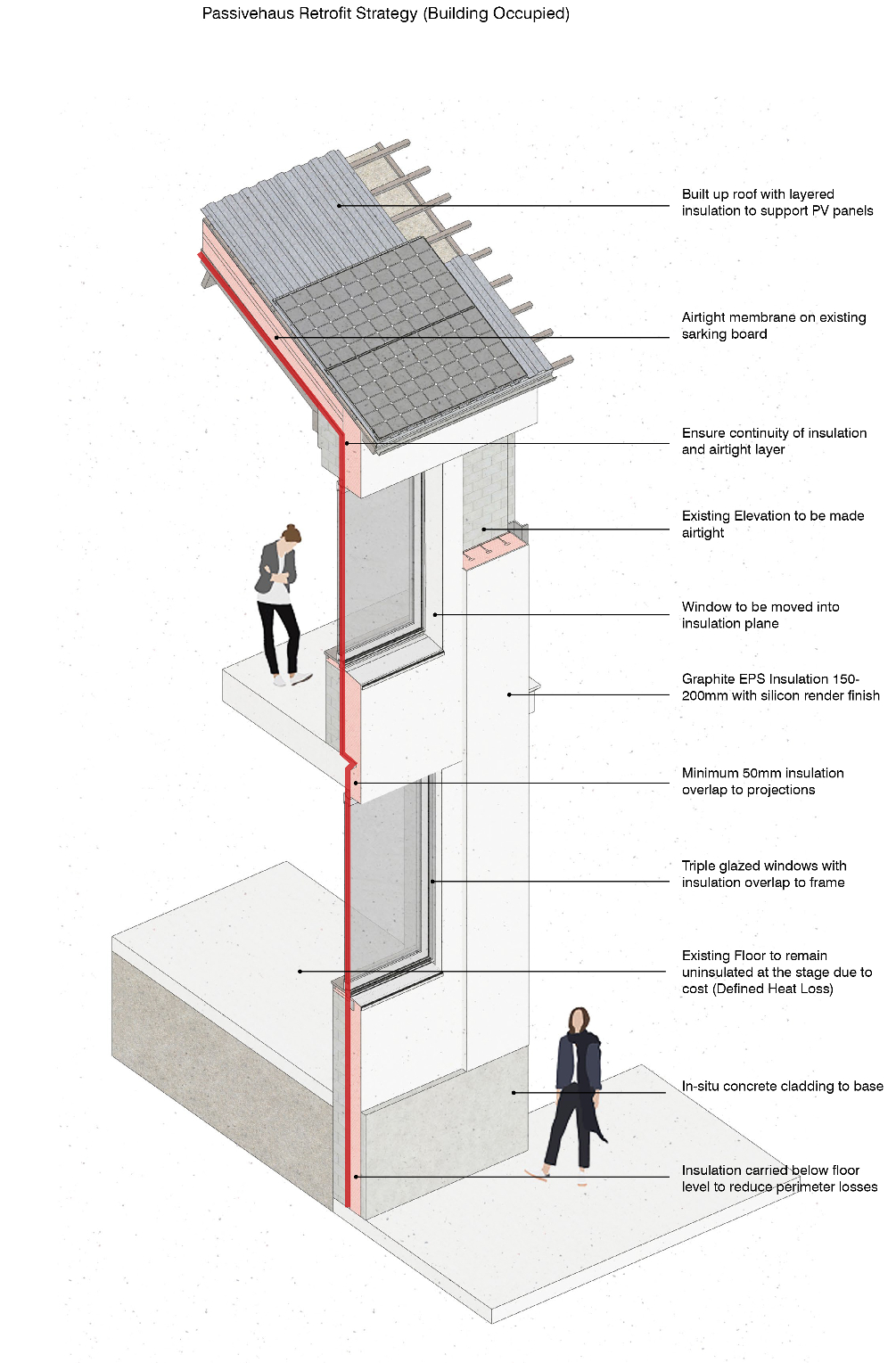
Collective Architecture developed an incremental plan for the retrofit, ensuring it could be carried out in phases in line with available funding. Taking a fabric-first approach and designed to target EnerPHit standards, the works would reduce energy demand while improving the appearance of the building and making it more comfortable for users.
Rather than attempting to recreate the 1920s design, the retrofit offers a contemporary interpretation of the original elevations, emphasising key architectural characteristics ‒ massing, rhythm and repetition.
Emily Ong of Collective Architecture said: “We designed the retrofit to take advantage of Civic House’s form, east-west orientation and existing glazing patterns. We wanted to ensure that its unique features were not only preserved but also enhanced in a way that delivered a comfortable indoor environment for occupants ‒ whether the building was being used as a co-working space or by up to 200 people as an events venue.”
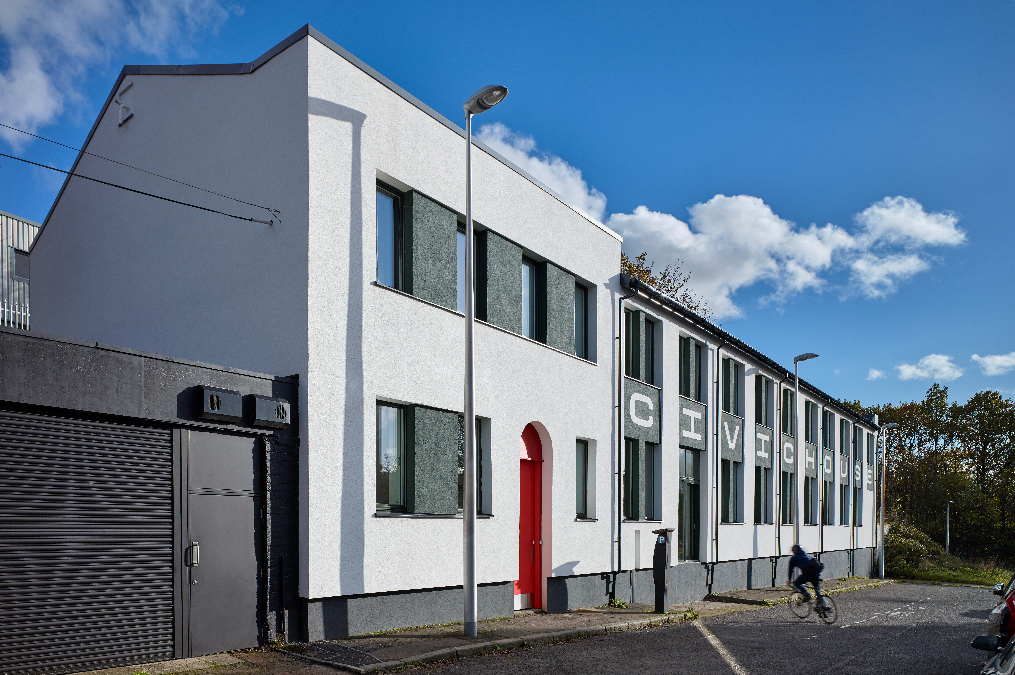
Image: Andrew Lee
The first phase of the external works was carried out during 2019‒20, funded by £101,047 from the Climate Challenge Fund. This involved replacing the dilapidated slate roof with thermally efficient composite metal roof panels on top of an airtight membrane laid on the existing roofing boards.
The second phase followed in 2020‒21, funded by £319,550 from the Scottish Power Energy Network’s Green Economy Fund. This saw the installation of a 270m2 50kW PV roof array, an external insulation cladding system for the walls, new triple-glazed airtight windows and a mechanical ventilation and heat recovery system, along with an air source heat pump.
With the phase two works now complete, Civic House is home to a thriving community of social and creative enterprises. As an events space, it hosts talks, film screenings, performances and exhibitions. And Parveen’s ‒ a Pakistani-inspired canteen, open four days a week – provides a social hub for the wider Speirs Lock creative community. Other visitors come from all over Glasgow and further afield.
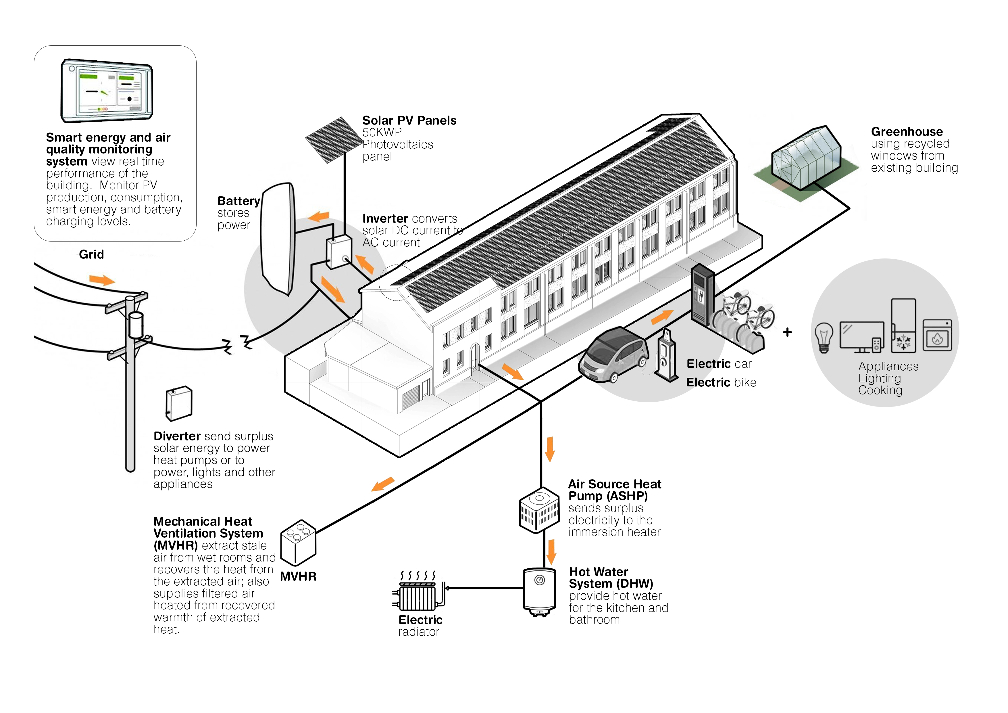
Agile City director Rob Morrison said: “Before we started work at Civic House, we took inspiration from other cultural spaces with progressive agendas. Now community groups from various post-industrial cities are coming to visit us. Civic House demonstrates that not-for-profit local organisations have the power not only to save much-loved buildings and bring new life to post-industrial districts but also to become small-scale sustainable energy generators.”
The building is already fulfilling its purpose as a micro power station. During the 12 months from January 2022, it used just 1684kWh of gas and 9706kWh of electricity, while generating 30,780kWh of electricity – equating to a net energy gain of 19,390 kWh. As the co-working space and canteen were not in use during the first part of 2022, the energy usage for 2023 is likely to be a little higher, but Agile City is confident that the building will continue to be a significant net energy generator.
Agile City continues to observe and learn from Civic House and its users. The next phase of the project will reactivate the public space around the building ‒ attracting more local people to the neighbourhood through music and gardening projects.














